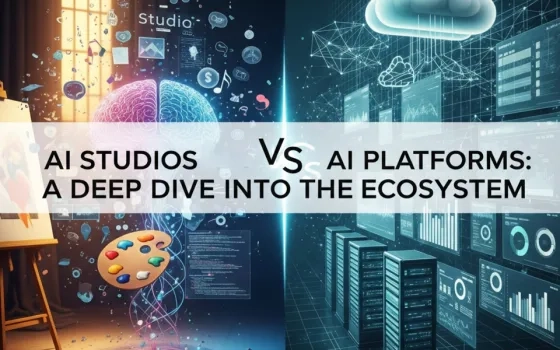Data alone doesn’t drive transformation. For a business to pursue transformation, data should ultimately be translated into value-driven analytics. However, many organizations are only halfway towards achieving so.
Despite understanding the overarching potential of analytics, leaders are far from making comprehensive investments in the domain. They are either stopping at acquiring expertise or plowing money into building the necessary infrastructure to manage the lifecycle of data.
Truth be told: organizations can only bridge the gulf between data and value-driven analytics if they prioritize three fundamental aspects.
- Technology
- Processes
- Culture
If they fail to do so, they may develop a false perception of being 'Data-driven' and never attain the anticipated transformation.
In the article to follow, we will learn the distinction between data and value-driven analytics and how the latter can be instrumental in driving Digital Transformation.

Explaining the fusion of forces: Data and value
It is a widely held axiom that data is the new oil. Like oil, data fuels an organization's core to adapt and evolve continually—and can be valuable only if extracted and utilized effectively. Data in its raw form lacks intrinsic value.
Value-driven Analytics is an industry practice gaining traction as a way to transform businesses by placing value creation at the forefront of data pipelines. In contrast to traditional analytics, which focuses on generating insights and identifying trends, Value-driven Analytics is about using data to draw actionable insights in real-time and drive measurable outcomes.
Key components of Value-driven Analytics
- Outcome-oriented: Value-driven Analytics starts with identifying the business outcomes that must be achieved. The analysis is focused on understanding how data can be used to achieve these outcomes rather than simply generating insights without clear business relevance.
- Quality-led: Data quality is a foundational building block of value-driven analytics. The analysis is only as good as the quality of the data used. To ensure data quality, value-driven analytics involves data pre-processing, profiling, cleansing, enrichment, and other data preparation steps.
- Predictive Modeling: Predictive Modeling hinges on value-driven analytics to aid modern enterprises in forecasting activity, behavior, and trends. With analytics up their sleeves, organizations are positioned better to lead their businesses in the right direction while managing risks and volatility.
- Dashboarding: Visualization and dashboard tools communicate the insights generated from value-driven analytics. The goal is to provide a clear and concise view of the data, allowing stakeholders to understand the insights and take action quickly.
- Always-on improvements: Value-driven analytics is characterized by continuity. It involves ongoing monitoring of the data to identify changes in trends and patterns. This allows organizations to adapt their strategies and make more informed decisions.
Extracting value from data: Challenges arising from the 5Vs
Just like how every rose has its thorn, every technology carries with it a certain level of risks and challenges.
While there is no denying that data is the linchpin of modern enterprises, leveraging its full potential is a tightrope walk. The 5Vs—which stand for Volume, Velocity, Variety, Veracity, and Value—are the key traits of data that hinder the process of managing and extracting value from it. These 5Vs pose several obstacles, as discussed below.
- Volume: The amount of data generated every passing hour of the day is inconceivable. The quantity surpasses a couple of bazillions, so to speak. Traditional data storage and processing systems cannot handle such huge troves of data, making the journey from data to decision an uphill battle.
- Velocity: Data is generated, processed, and analyzed at warp speed. In the said scenario, traditional batch processing methods do not show expected results, derailing the process of pulling out insights from data.
- Variety: Data is distributed across a broad spectrum of formats, including structured, semi-structured, and unstructured data. When it comes to managing this variety of data, enterprises find themselves in a tight spot.
- Veracity: Big Data can often be messy, incomplete, or unreliable, which can create challenges for data analysis and decision-making.
- Value: Collecting and curating data is not the end of the loop. The real closure comes when data is communicated to help make more intelligent decisions—faster. However, given the overwhelming quantity, data often melts into a graphic soup that can be difficult for viewers to comprehend.

(The 5Vs of Big Data: Challenges in deriving value from data)
Value-driven analytics holds the potential to be the next differentiator of success, but these 5Vs thwart every attempt made to infuse life into data and make its value count. All of this makes it difficult to find the right area of focus and drives organizations to explore structured models or frameworks that enable value.
Insights to Impact: Untangling value from data through a structured framework
Companies that fail to awaken their data leave massive value on the table and run their businesses in sandboxes. In today’s day and age—when organizations experience business headwinds that are stronger than ever—it is critical to put in place the right guiding framework that aligns with digital transformation objectives and helps meet data its value.
We suggests the use of a 'Data-to-Decision' framework, which comprises three stages to manage the entire data lifecycle. This framework assists in implementing a successful business transformation strategy focused on delivering value at scale.
Stage one: Envision
The ‘Envision’ stage encompasses measuring the status quo, outlining a strategy, and envisaging the future impact. It involves the following steps:
- Define an opportunity: Clearly defining the opportunity helps leaders determine the data to collect, the metrics to use, and the model to build. Begin by asking a few key questions:
- How will data and analytics be utilized?
- What problems will value generation solve?
- Will the projected impact align with business goals and vision?
- Create a roadmap: The next step involves curating a blueprint that acts as a compass to lead organizations toward the right course of action. Lay the groundwork by posing some questions that include:
- How will data be captured?
- How will the value be measured?
- What will be the appropriate technology stack?
- What implementation milestones will be addressed with specific timeframes?
- Build a business case: A justification for undertaking any project, with coherent cost and risk analytics, is presented in a business case. This may involve demonstrating the potential return on investment (ROI) of analytics initiatives, highlighting risk factors, and identifying other benefits, such as improved decision-making or operational efficiency, that can be achieved through the use of analytics.
Stage two: Execute
The purpose of the 'execute' stage during the implementation of an analytics framework is to put the plan into action by implementing the proposed solutions and evaluating their effectiveness in addressing the identified problem.
- Collect and prepare data: The next phase involves examining the available data, both internal and external, sifting through information to understand its potential, and setting up the necessary data framework for collecting, handling, and evaluating the data. It further encapsulates cleaning, transforming, and preprocessing data to make it suitable for modeling. This process involves adding missing values, handling outliers, scaling, and encoding categorical variables.
- Choose a model: Technology architectures define mission success. At this given point, organizations face the need to swap their legacy systems with modern analytical capabilities and build the infrastructure of tomorrow. They can either choose to build these capabilities by harnessing in-house resources or outsourcing them altogether.
- Utilizing both supervised and unsupervised learning methods to create an agile analytical model that best fits the organization's needs.
- Assessing different analytical tools to determine and implement the most appropriate stack for the organization.
- Encoding, validating, and testing the heuristics throughout the organization.
- Integrate data: If organizational data lies fragmented, it is challenging to mobilize its value. At its simplest, integration is the process of consolidating data from disparate sources and unlocking a single source of truth through one powerful interface. Any business willing to close the value gap must reimagine its workflows to embed data at a cellular level and spark:
- Strategic foresight and decision-making
- Agile collaboration
- Resilience at the core
- Alignment on company-wide goals
- Trust and transparency
- A sense of ownership at all levels.
- Revisit culture and foster new dynamics: Resistance to culture change is as real as daylight. But, neutralizing it is crucial to help organizational initiatives take off. Key stakeholders must focus on:
- Building capabilities of executives and mid-level managers with a perspective of enabling data-driven decisioning in a top-down approach.
- Encouraging job-specific skills and training and helping employees confidently expand into new roles.
- Establishing a regular cadence of communication to sow transparency and reassure in times of uncertainty.
To achieve optimal analytics impact and realize business value from analytics initiatives and solutions, it is crucial to ensure that personnel accept, trust, and consistently use the analytics tools by comprehending their functionality.
Stage three: Unleash
In the 'unleash' stage, the objective is to leverage insights generated from the analytics solutions to identify trends, patterns, and waves of change that are not immediately apparent. It also includes identifying areas where improvements can be made and new opportunities can be explored.
Performance metrics must be established to measure the effectiveness of analytics solutions at this stage. When relevant metrics are identified, the organization is leveled up to track progress, measure the impact of analytics objectively, and course-correct in an agile manner. Measuring the ROI of analytics enables organizations to identify initiatives that add value to business performance, and appropriate investment or corrective measures can be taken. Furthermore, this step allows for further investment in analytics initiatives that bring actual transformational business value.

(Free value from data with our Data-to-Decision framework)
Metrics to assess the impact of Data-driven Analytics
Defining metrics is instrumental to measuring the impact of analytics at every level. Metrics provide an objective understanding of the effect of data-driven analytics across operations, as well as identify areas of improvement. By tracking these metrics, organizations can ensure that decisions are made in the right direction and churn out outcomes as desired.
Let's say a retail organization has undertaken a transformative initiative to improve its supply chain management. To measure the value of their data at each stage of the process, they could define metrics such as:
- Stage 1 (Data Collection): Number of suppliers onboarded and the accuracy of supplier data.
- Stage 2 (Data Processing): Time taken to process and integrate new supplier data into the system.
- Stage 3 (Data Analysis): Reduction in stock-outs and overstocking, as well as increased inventory turnover.
- Stage 4 (Data Insights): Increase in supply chain efficiency and reduction in costs.
By tracking these metrics at each stage of the process, the organization can identify any bottlenecks or issues that need to be addressed and ensure that they are making progress toward their desired outcomes.
Thinking big with Value-driven Analytics
Value-driven analytics heralds a new era of transformation for modern enterprises. With its game-changing potential, analytics can empower organizations to outmaneuver disruptions with an edge. However, embedding analytics across every functional layer of an organization is a journey riddled with challenges.
Implementing a structured process, such as the Data-to-Decision framework, can set enterprises on the right path to achieving holistic transformation with operational intelligence and foresight. Moreover, it can transform enterprises as more agile, efficient, and resilient to capture the next frontiers of growth and become the leaders of tomorrow.
So, it is not a question of whether or not to adopt Value-driven Analytics but rather a question of when to adopt it.





















